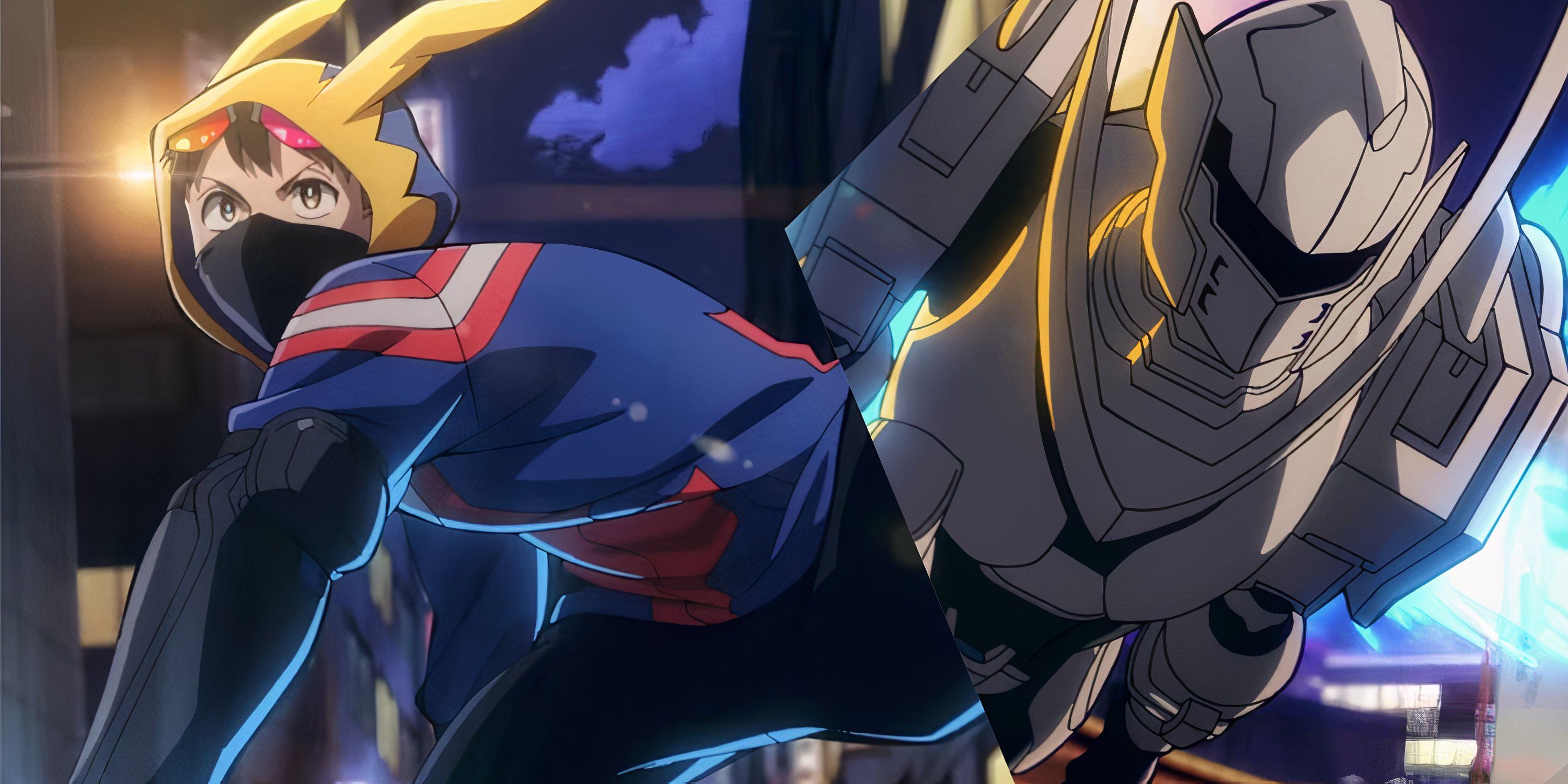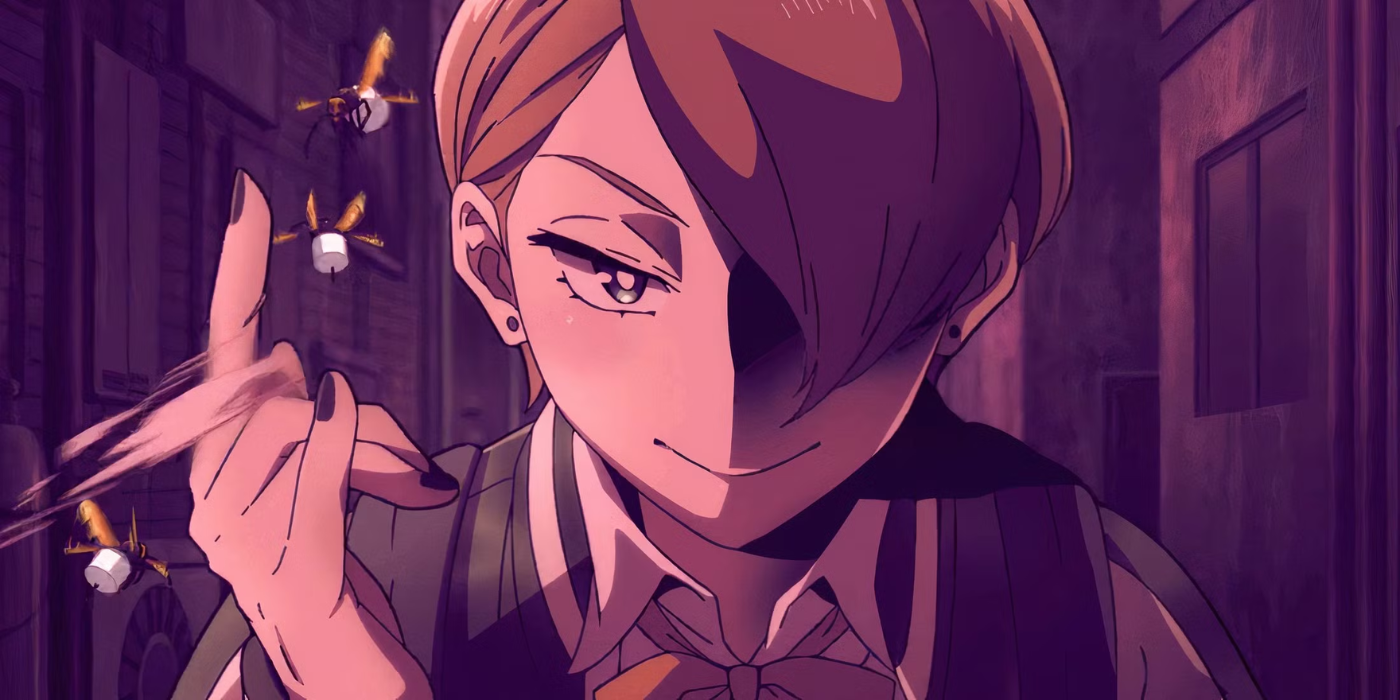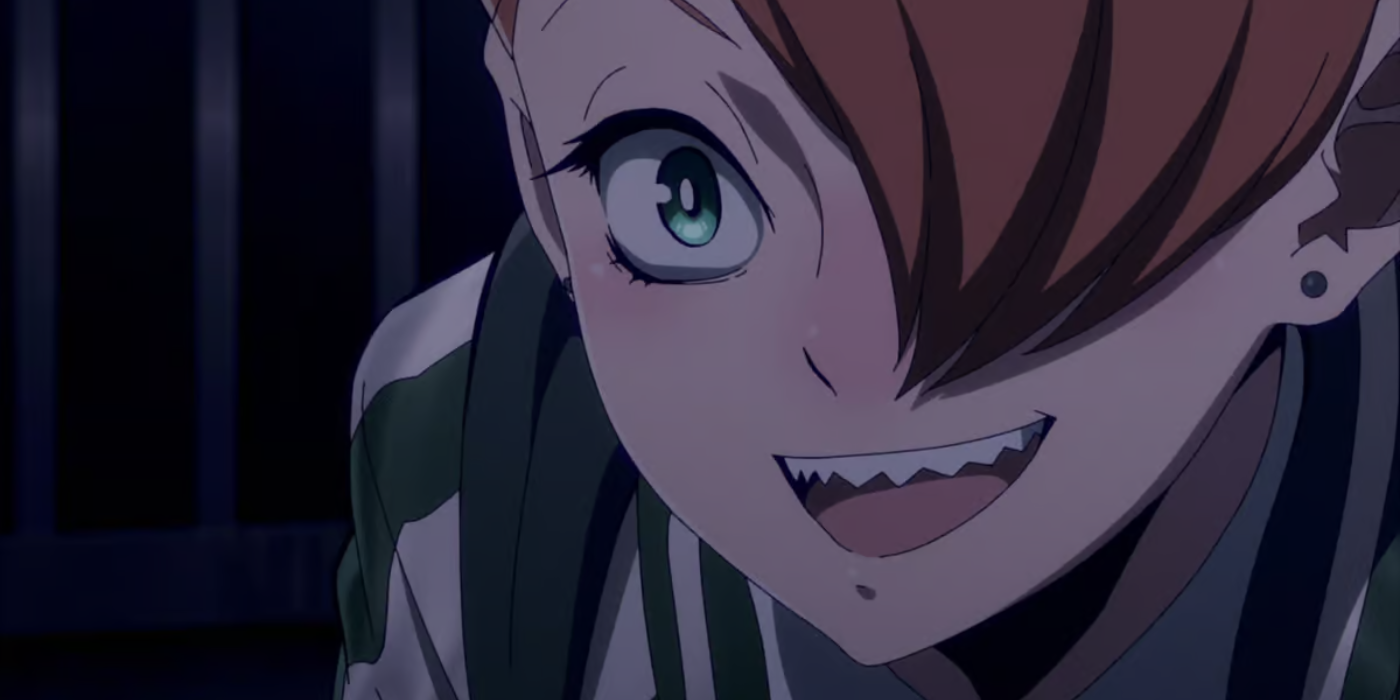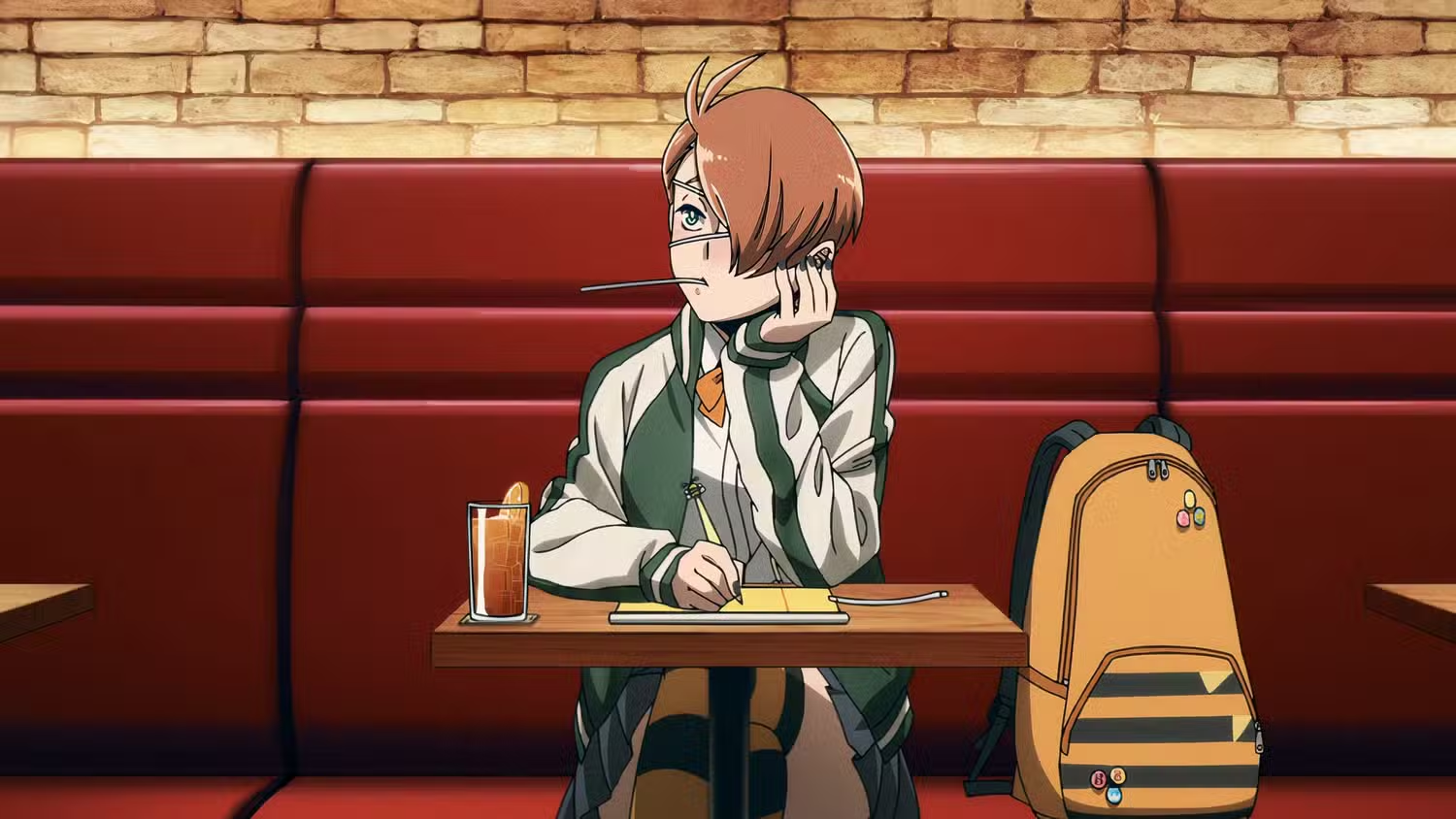
In terms of anime spin-offs, few have kicked off as impressively as the one from the original MHA. The spin-off series, airing in Spring 2025, has been a standout, offering viewers a detailed glimpse into Hero Society five years before Izuku Midoriya embarked on his journey to become the world’s top hero. The main character of Vigilantes, Koichi Haimawari, may not be as powerful as Deku, but based on the latest episode, he certainly embodies heroism just as effectively.
In Episode 4 of My Hero Academia: Vigilantes, labeled “Top Runner,” the trio comprising of Haimwari, Pop-Step, and Knuckleduster delve deeper into the Trigger outbreak mystery. Similar to previous episodes, this one emphasizes the civilian perspective within the world of MHA. The vigilante team is gradually settling into their new roles, making each episode a thrilling spectacle to behold.
The Return of a Familiar Hero Highlights the Thin Line Between Hero And Vigilante
MHA: Vigilantes Continues Its Examination of Hero Society
Fans of the original “My Hero Academia” anime might find Episode 4 of “MHA: Vigilantes” comfortably familiar, as it echoes some aspects of Izuku Midoriya’s early days at UA. Particularly, Koichi Haimawari’s progress in mastering his Quirk mirrors Izuku’s initial struggles. Moreover, the episode brings back characters from “My Hero Academia” – Tensei and Tenya Iida. While Tenya doesn’t physically appear in the episode (he is mentioned through Tensei’s flashback), his role significantly impacts Episode 4. It’s evident that these characters from the main series lend a distinct flavor to this episode, showcasing how creators can seamlessly incorporate elements from related works.
In Episode 4 of MHA: Vigilantes, Tensei Iida plays a significant role but never takes over the storyline. Contrary to expectation, it’s not Ingenium who catches the swift bat villain that appears throughout the episode; instead, it’s Knuckleduster and Koichi Haimawari who manage to capture him using advice given by Tensei earlier in the episode. This clever inclusion of Ingenium in Vigilantes’ narrative makes for an exciting addition to the story, appealing to both long-time fans of My Hero Academia and newcomers who only follow the spin-off. Additionally, Tensei’s presence in Episode 4 serves a dual purpose: it functions as a thrilling crossover, but also subtly emphasizes one of Vigilantes’ key themes.
At the start of each episode, the series Vigilantes introduces or labels a character as a “villain” using an interlude card, emphasizing their significance. Although both terms are crucial, Episode 4 delves particularly deep into the term “hero.” Since the Hero Society originated from vigilantes who felt compelled to safeguard those around them, it makes sense that characters like Knuckleduster and Haimawari, true vigilantes, would provide intriguing contrasts for figures such as Ingenium.
At their heart, heroes are driven by a strong desire to protect others, and this is evident in the case of Haimawari (and by extension, Knuckleduster) from the series “My Hero Academia: Vigilantes.” While they may share similar actions with traditional heroes on many occasions, they differ in that they don’t hold an official hero license. This subtle distinction might be overlooked in other anime, but not here, especially in Episode 4. The comparison of heroism and vigilantism is skillfully portrayed through the interactions between Haimawari and Tensei, and Knuckleduster further solidifies this examination, making it feel more genuine.
Knuckleduster Is the Perfect Point of Comparison for MHA’s Greatest Heroes
Among all characters in MHA: Vigilantes thus far, none seem to deviate more from the conventional understanding of heroes than Knuckleduster. With his rough, gang-like demeanor and dubious tactics, Koichi Haimawari’s mentor is a stark contrast to the hero image fans typically envision. Indeed, it’s not unreasonable for viewers to question Knuckleduster’s heroic status, given his lack of grace, empathy towards villains, and disregard for collateral damage – traits often associated with unworthy heroes. However, it is frequently Knuckleduster who steps up to rescue civilians from the criminal underworld in Hero Society, even going so far as to save them dramatically, as demonstrated in Episode 4.
In essence, characters like those from ‘My Hero Academia’ tend to value law, order, and morality. However, a character such as Knuckleduster appears indifferent to the legal implications of his actions as a vigilante, leading one to wonder: “Is it significant that Knuckleduster disregards hero regulations?”
It seems that ‘My Hero Academia: Vigilantes’ is less interested in providing answers and more in questioning traditional views of what makes a hero. This thematic complexity, coupled with the captivating animation during Knuckleduster’s fight in Episode 4, has swiftly earned the series many fans.
Episode 4 Further Develops a Different Kind of Villain
Bee’s Storyline Continues Vigilantes’ Push for Mature Storytelling



Through four episodes, the storytelling in “My Hero Academia: Vigilantes” has been one of its main strengths, introducing a diverse array of characters quickly for Koichi Haimawari and his companions to interact with. Interestingly, Episode 4 has maintained a consistent focus on Bee, hinting at a dark undertone weaving through the narrative.
Bee, the enigmatic villain who distributes Trigger and controls insects, has made multiple appearances in successive episodes. With her shadowy confidant on the phone, it appears she’s ready to unleash a horde of Quirk-empowered frenzied individuals whenever needed.
I must confess, the scenes featuring Bee in Episode 4 offer a refreshing shift from those involving Tensei Iida and Knuckleduster. Instead of feeling jarring, they provide a captivating contrast to the lighthearted exchanges that dominate the rest of the episode. The portrayal of the villain veers away from the vibrant, comic book-inspired style seen in Ingenium and Knuckleduster’s action sequences, opting for one that beautifully accentuates the mature themes prevalent in Vigilantes. With Bee’s subtle references to drug use and suggestive undertones, it’s evident that this series is aiming for a more adult tone compared to the original My Hero Academia – an ambition that has been hinted at since the early episodes of Vigilantes.
In contrast to the fear-inducing villains from My Hero Academia, Bee’s control over bees doesn’t provoke the same level of dread. However, she is equally terrifying when it comes to confrontations involving Deku and his allies. This demonstrates the skill of Vigilantes in portraying the challenges faced by ordinary civilians, as even a figure like Bee has grown into a significant threat. Regrettably for Koichi Haimawari and his companions, things are likely to become even more difficult before they are resolved.
If My Hero Academia: Vigilantes persists along this path, there’s no telling how far the series could reach. Its production quality is already exceptional, and in numerous ways, it successfully embodies the aesthetic of American comic books more effectively than the original My Hero Academia ever envisioned. The engaging ongoing storyline that Vigilantes is developing now will likely be crucial for the series to break free from the shadow of its predecessor, but for the moment, it’s excelling at establishing its unique identity.
My Hero Academia: Vigilantes is .
Read More
- Grimguard Tactics tier list – Ranking the main classes
- Gold Rate Forecast
- 10 Most Anticipated Anime of 2025
- Box Office: ‘Jurassic World Rebirth’ Stomping to $127M U.S. Bow, North of $250M Million Globally
- USD CNY PREDICTION
- Silver Rate Forecast
- Mech Vs Aliens codes – Currently active promos (June 2025)
- Castle Duels tier list – Best Legendary and Epic cards
- “Golden” Moment: How ‘KPop Demon Hunters’ Created the Year’s Catchiest Soundtrack
- Maiden Academy tier list
2025-04-30 07:10